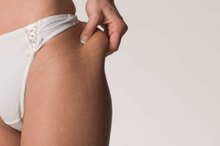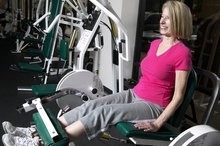How to Invigorate Tired Legs
Exercising is rough when you have tired, aching legs. Walking on hard, flat surfaces can cause your legs to rotate inward in such a way that injures your calf muscles. Your feet flatten and twist to accommodate unnatural flooring or poorly-fitting shoes, which then puts pressure on the musculature of your legs. Your legs feel tired at night, with muscle aches plaguing your calves and the area behind your knees. Fortunately, you can reduce these symptoms at home.
Sit down and rest several times each day, especially if you stand all day at your job. Ignore the temptation to run errands during breaks at work; spend the time sitting with your weight off your legs and feet.
How to Prevent Leg Cramps When Sitting at Work
Learn More
Immerse your calves and feet in warm water, or go for a swim in a heated pool. The warmth relaxes muscles and stimulates circulation. A study published by the American College of Rheumatology reports that exercise in warm, waist-high water decreased lower leg pain in women with fibromyalgia. These women enjoyed long-term improvement, maintaining muscle strength after the program had ended.
Perform calf-stretching exercises. Inadequate stretching and muscle fatigue can lead to painful muscle cramps. The American Academy of Orthopaedic Surgeons describes one exercise to stretch your calves. Lean forward against the wall with one foot in front of the other. Straighten your back leg and try to put your heel to the floor. Keep your front leg bent. Hold the position for 15 to 30 seconds. Switch feet and repeat.
Shin Stretches for Runners
Learn More
Wear orthotic shoes that correct excessive pronation. This special footwear restricts your foot’s inclination to turn inwards. Pre-molded orthotic appliances are available if your problem is neither chronic nor acute. Consult a podiatrist for custom-made orthotics if your legs are extremely tired or you experience this fatigue for more than a few days.
Sleep with a pillow or folded blanket under your feet to elevate your feet above your heart. This will reduce any puffiness or inflammation in your legs, ankles or feet.
Change your shoes. Improper footwear may be causing you to stand with poor posture, increasing the stress on your musculoskeletal system in your back, hips and legs. Wear shoes that fit well, provide sturdy support and feel comfortable when you walk or sit for hours.
Wear compression hose. Compression hose prevent blood from pooling in your feet, which causes an achy feeling in your lower extremities. Purchase compression hose from your local pharmacy or drug store.
Talk with your podiatrist if your tired legs are preventing you from participating in the activities of your daily life. Experiencing tired legs is annoying once or twice a year, but feeling exhaustion in your legs every day is catastrophic.
Tips
When you get home after work spend a few minutes lying on your back on the floor. With your buttocks against a wall, lift both legs up and rest them against the wall.
Warnings
Check with your health-care provider if none of the invigorating treatments for tired legs seem to be working. This could be a symptom of an underlying condition.
Related Articles
References
Resources
Writer Bio
Lynn Hetzler has been a writer since 2000. She was editor in chief and head writer for the online publication Eye on Cameraware. She owns a computer store offering repair, websites, instruction, and more. Hetzler is a certified medical assistant with experience in oncology, laboratory testing and protocol writing.









